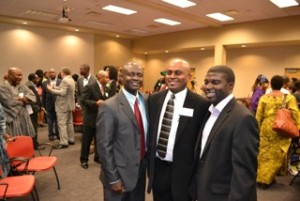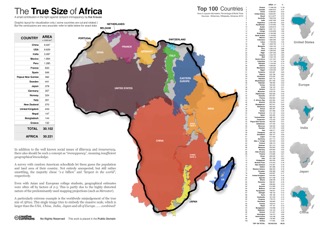AFRICAN PROFESSIONALS NETWORK – APNET
If you are an African born professional living in the Tri-State region looking to network with Africans, or someone interested or working in Africa, the African Professionals Network (APNET) may be just the organization you want to join. APNET is a forum to share ideas, and establish networks. It promotes personal development through its workshops, conferences and quarterly meetings and partners for service in the community.
Finding the African Community in Cincinnati
APNET TEAM “Networking, Business and Community” are our hallmarks, according to Clara Matonhodze, Vice President for Strategic Initiatives for APNET. She is the full time Director for Business, Events and Membership with the National Council for Black Studies, at the University of Cincinnati and is originally from Zimbabwe.

Clara Matonhodze of APNET
“We are a Pan-African organization with a membership that is varied, but one that shatters stereotypes about African business success. Members include African immigrants who have established highly successful businesses here, as well as managers in some of the area’s biggest employers such as P&G, Luxottica and PNC Bank. Our nearly 700 members hail from twenty African countries, representative of the majority African populations in our area. One of our members, Christopher Che, CEO of Dayton Hooven, served on President Obama’s Council on Jobs and Competitiveness (Jobs Council). Other members are professors or administrators at our local institutions of higher learning. Still others are new immigrants to Cincinnati. Please mention again, you don’t have to be African to join.”
Why is Africa so important to this century and to our community?
According to Clara, “Africa is the future of world trade and development, the last frontier for emerging markets. Economists often compare its growth trajectory to China’s. It is the second biggest continent in the world. Most people still don’t understand that Africa has 54 diverse countries, all at different stages of development encompassing a multitude of languages and wide ranging religious and cultural traditions.”

Current APNET Leadership
By the end of this century 40% of all people on earth will be African (See Africa facts below). According to the CIA Factbook, in most of the sub-Saharan countries 40% of the population is under l5. As far as the wealth and opportunity in the continent, Clara has this to say, “Though its mineral wealth is still a principal economic driver in many countries, opportunity abounds for all types of commercial enterprises, from consumer products and health care to energy and construction of infrastructure and housing and, of course, technology and media.” APNET hopes to put more emphasis on trade with Africa in the future.
 What else does APNET do?
What else does APNET do?
“Another important aspect of our work is to engage people from Africa coming to our region. We help to promote a friendly environment and transition, so those who come, stay and contribute to our economy and diversity. We mentor high school and college students and work as partners with many organizations in the area on service projects. Monthly networking happy hours are open to anyone with an interest in Africa. Part of our strategy is to promote local businesses and support Tri-State commerce. After all, wherever we came from, this is where we now call home. As for stereotypes, come to one of our meetings and see for yourself that human aspiration and accomplishment can be found in every part of our world.”
Connect with APNET
Visit www.africanprofessionalsnetwork.org to join, or to find upcoming meetings or workshops. Of special mention is APNET’s headliner event – The Annual APNET Symposium which will be held this year on October 10 at the Anderson Towne Center. A membership structure and fees are currently in development. APNET is a reciprocal member with Greater Cincinnati World Affairs Council which joins other international organizations listed on the Global Cincinnati website as a Global Connection to the African community in the region.
Interview by Deborah Schultz, President of Trans-Borders Solutions, Advisory Board Member, GCWAC/Global Cincinnati.
Additional African Facts:
- 1 Billion People in 54 Countries
- End of the century, 40% of the people on earth will be African
- In most of the Sub-Saharan countries and in Sudan, there is a youth bulge with more than 40% of the population below 15 years old.
- Second largest continent in the world, 11.7 million square miles
- Sudan is the largest country in Africa; Cairo the largest city
- Over l,000 languages are spoken in Africa
- The oldest human remains ever discovered were found in Ethiopia and are 200,000 years old.
- The longest river in the world, the Nile, is located in Africa
- Victoria Falls is the largest waterfall in Africa and is a mile wide
 Source for picture: static02.mediaite.com/geekosystem/uploads/2010/10/true-size-of-africa.jpg
Source for picture: static02.mediaite.com/geekosystem/uploads/2010/10/true-size-of-africa.jpg
Citations:
1 billion people (2014) 54 recognized sovereign states/countries; 9 territories and 2 de facto independent states with very little recognition (worldpopulationreview.com)
End of the century, 40% of the people on earth will be African. (unicef.org Generation 2030 Africa Report, August 2014)
In most of the Sub-Saharan countries and in Sudan, there is a youth bulge with more than 40% of the population below 15 years old. (CIA Factbook cited on Wikipedia.)
Second largest continent in the world, 11.7 million square miles (Education.nationgeographic.com “Africa: Physical Geography”)
Algeria is the largest country in Africa; Cairo the largest city in terms of square miles (Mapsoftheworld.com)
Lagos Nigeria is the most heavily populated city in Africa
The longest river in the world is the Nile. (geography.about.com)
Victoria Falls is the largest sheet of falling water in the world and a World Heritage Site, one of l29 sites in Africa (intelligenttravel.nationalgeographic.com/)
1000-2000 languages are spoken in Africa which has one third of the world’s languages
The oldest human remains were discovered in Ethiopia and are 200,000 years old. (history.com “Discovery of Oldest Human Fossil Fills Evolutionary Gap” 3/11/15)


